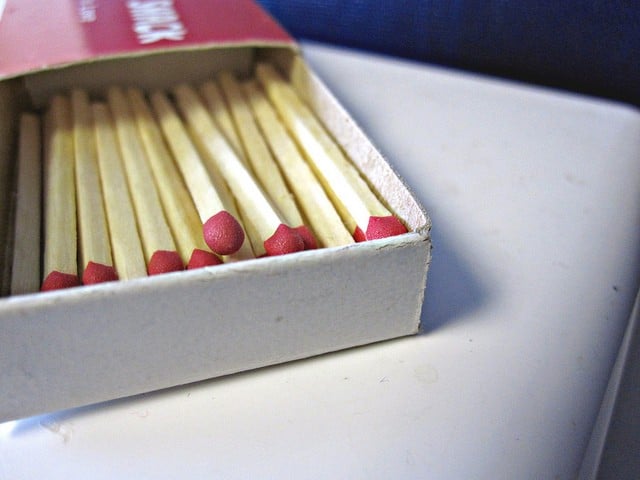Nowadays it’s all too common for tornados, hurricanes, or man-made disasters to strike without warning. During a time of crisis, those who are prepared have a higher likelihood of survival than those who don’t. If you want to make sure you’re ready when disaster strikes, you may want to create a survival kit.

4 Steps to Create a Survival Kit
1. Assess Your Area and Determine What You Need to Prepare
While you can’t and shouldn’t try to prepare for every type of disaster you may encounter, it is essential that you determine what specific precautions you should take. Taking a survey of your geographical location and social setting can help determine exactly what precautionary measures would benefit your personal situation.
For example, if you live in an area where meteorological events are common (i.e. hurricanes, tornadoes, severe thunderstorms) you should prepare differently from those who live in an area where earthquakes and forest fires are the greatest threat. Population density should also be considered, as those who live in remote areas face a different, though an equally challenging set of obstacles to overcome from those who live in a bustling city.
Related Article: Health Tips from Fitness Expert Owen McKibbin
Even if there are no glaring threats visible to you, it is still wise to be prepared for unexpected surprises. Blackouts, flash floods, and disease outbreaks have a nasty way of striking when you’re the least prepared.
2. Choose a Secure, Easy to Access Location for Your Equipment
A survival kit is a serious investment in your safety and should be treated appropriately. Some of the essential items are quite expensive and should be protected as such. More importantly, though, you do not want your kit destroyed by the very disaster it was meant to save you from!
The ideal location is in a strong safety that is waterproof, fireproof, and shock-resistant. These safes are popular among gun owners and can be purchased from a number of companies, such as Grainger Security and Patriot Safes.
However, these safes are enormous and extremely expensive, so buying one for just a basic kit is an unwise investment (If though, you’re also planning to use it to protect valuables and personal documents-bank statements, passports, medical records, etc., it may be worth looking into).
A more realistic location would be an above-ground, secure but easy to access areas, such as a large walk-in closet or a garage tool locker.
The basement or the tool shed behind the house are very bad ideas because basements tend to flood and you never, ever want to have to go outdoors to retrieve your gear. This is just asking for a problem with the disaster going on outside. Keep your kit in a safe, reachable spot inside your home.
The Federal Emergency Management Agency (FEMA) recommends that homeowners “Keep this kit in a designated place and have it ready in case you have to leave your home quickly. Make sure all family members know where the kit is kept.” FEMA also recommends that a survival kit be kept in vehicles as well, in case of motorists become stranded.
A good rule of thumb is to put everything back in the kit after you remove it, so you know it will be there when you really need it.
3. When in Doubt…Pack It!
You can never be certain what supplies you will need in a disaster until disaster strikes. Therefore, pack everything that you think you’ll need in an emergency.
Some essential items are a large supply of water and non-perishable food items. Military-grade MREs (Meals Ready-to-Eat)
are an excellent choice as they provide plenty of nutrition, have a large number of meal choices, are designed to withstand the elements, and contain everything you need to take care of your food needs.
Related Article: 37 Superfoods to Start Eating Today
It is also important to have plenty of light sources (flashlights, lanterns, strobes) and enough batteries to keep them lit through several nights. Other important items may include a portable AM/FM radio, walkie-talkies, an emergency cell or satellite phone, matches or lighters, flares, first aid, and a knife.
Consult a survival manual, or better yet, speak to a survival expert to help determine the most important items to take with you. Remember, it is always better to have something and not need it than to need an item and not have it.
4. Learn How to Use Your Survival Kit
This may seem self-explanatory, but many people fail to learn how to properly use all of the equipment in their kits and use it under duress. It’s one thing to know how to operate a jumper cable on a sunny afternoon, it is quite another to be able to do it in the dark, when it’s raining, and when you are in distress.
Practicing survival equipment use under stressful conditions can help you develop mechanical memory for your equipment that will help you immensely if confronted by danger.
The Takeaway
Natural and man-made disasters seem to be happening more frequently than ever. Having a survival kit can ease your mind should disaster strike and provide you with some items that could just save your life.
Featured photo by nerissa’s ring
